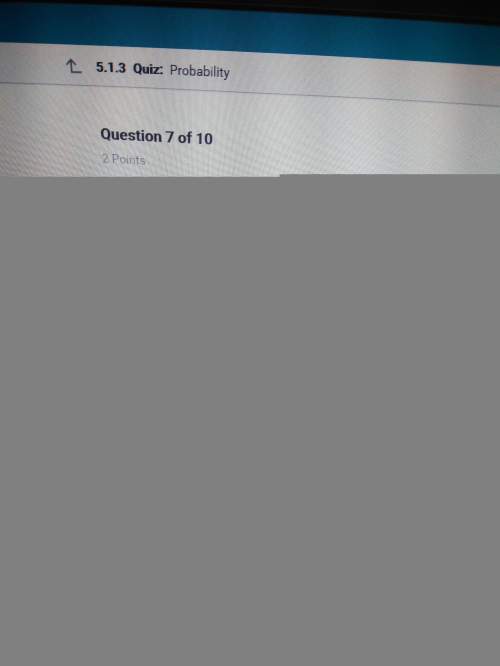
Mathematics, 26.02.2020 03:51 ttrinityelyse17
Suppose the vector-valued function r(t) = < f(t) ,g(t) ,h (t) > is smooth on an interval containing the point < f(t0) ,g(t0) ,h(t0) > . The line tangent to r(t) at t = t0 is the line parallel to the tangent vector r'(t0) that passes through < f(t0),g(t0),h(t0)> . Find the line tangent to the curve at t = t0. r(t)=(2t-1,9t+5,t^2), t0= 1 The tangent line is < , , > .

Answers: 1


Other questions on the subject: Mathematics

Mathematics, 21.06.2019 17:10, naimareiad
Which of the following expressions is equal to 2x^2+8
Answers: 1

Mathematics, 21.06.2019 18:50, umarhaley
The avenues in a particular city run north to south and are numbered consecutively with 1st avenue at the western border of the city. the streets in the city run east to west and are numbered consecutively with 1st street at the southern border of the city. for a festival, the city is not allowing cars to park in a rectangular region bordered by 5th avenue to the west. 9th avenue to the east, 4th street to the south, and 6th street to the north. if x is the avenue number and yis the street number, which of the following systems describes the region in which cars are not allowed to park? 5th ave 9th ave
Answers: 1

Mathematics, 21.06.2019 19:30, gabby77778
[15 points]find the least common multiple of the expressions: 1. 3x^2, 6x - 18 2. 5x, 5x(x +2) 3. x^2 - 9, x + 3 4. x^2 - 3x - 10, x + 2 explain if possible
Answers: 3

Mathematics, 21.06.2019 21:30, gonzalezashley152
In a test for esp (extrasensory perception), the experimenter looks at cards that are hidden from the subject. each card contains either a star, a circle, a wave, a cross or a square.(five shapes) as the experimenter looks at each of 20 cards in turn, the subject names the shape on the card. when the esp study described above discovers a subject whose performance appears to be better than guessing, the study continues at greater length. the experimenter looks at many cards bearing one of five shapes (star, square, circle, wave, and cross) in an order determined by random numbers. the subject cannot see the experimenter as he looks at each card in turn, in order to avoid any possible nonverbal clues. the answers of a subject who does not have esp should be independent observations, each with probability 1/5 of success. we record 1000 attempts. which of the following assumptions must be met in order to solve this problem? it's reasonable to assume normality 0.8(1000), 0.2(1000)%30 approximately normal 0.8(1000), 0.2(1000)% 10 approximately normal srs it is reasonable to assume the total number of cards is over 10,000 it is reasonable to assume the total number of cards is over 1000
Answers: 1
You know the right answer?
Suppose the vector-valued function r(t) = < f(t) ,g(t) ,h (t) > is smooth on an interval conta...
Questions in other subjects:

Mathematics, 23.02.2021 21:50

Mathematics, 23.02.2021 21:50




Mathematics, 23.02.2021 21:50


Biology, 23.02.2021 21:50

Arts, 23.02.2021 21:50

English, 23.02.2021 21:50




